GPU & NAND Performance
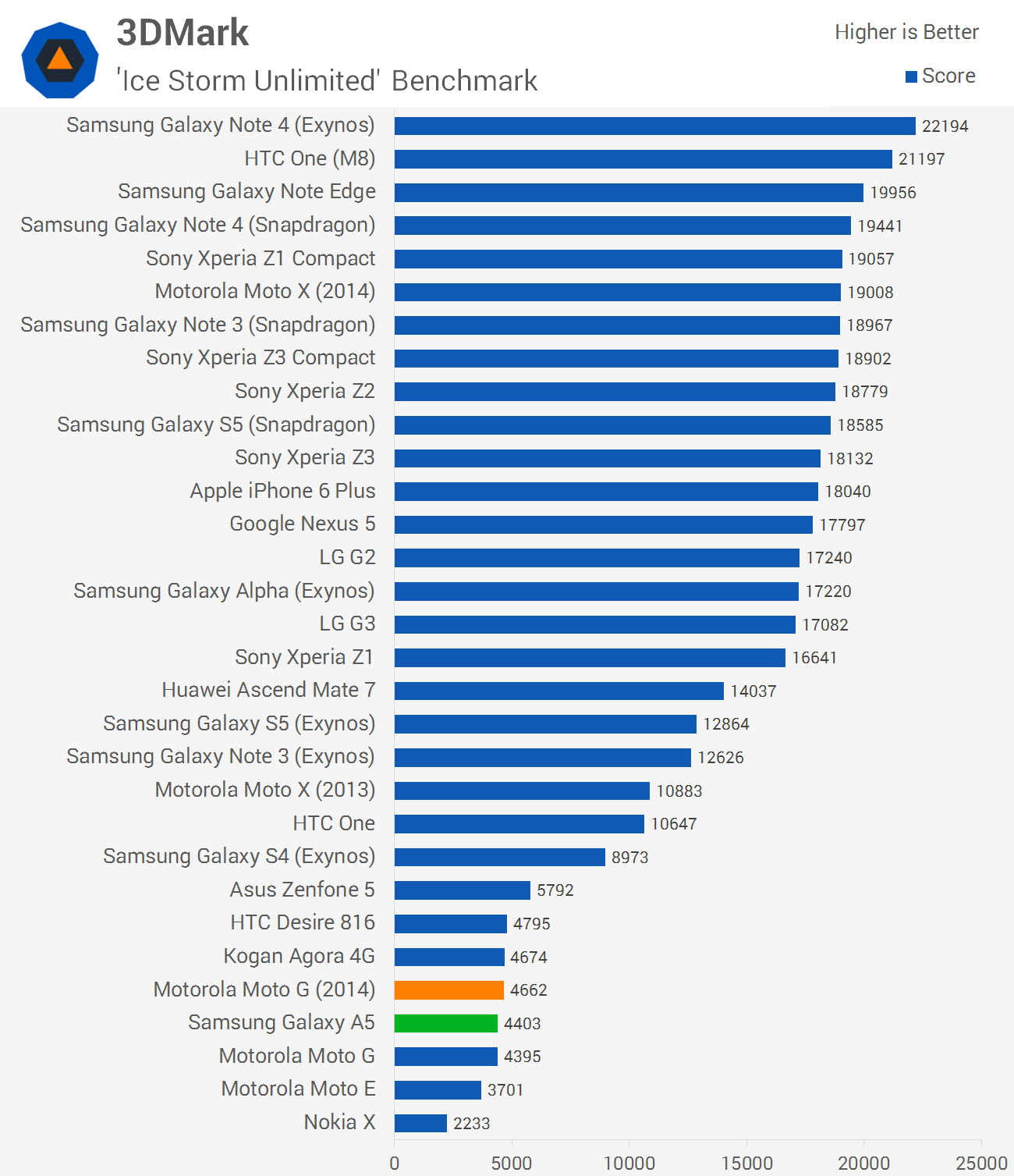
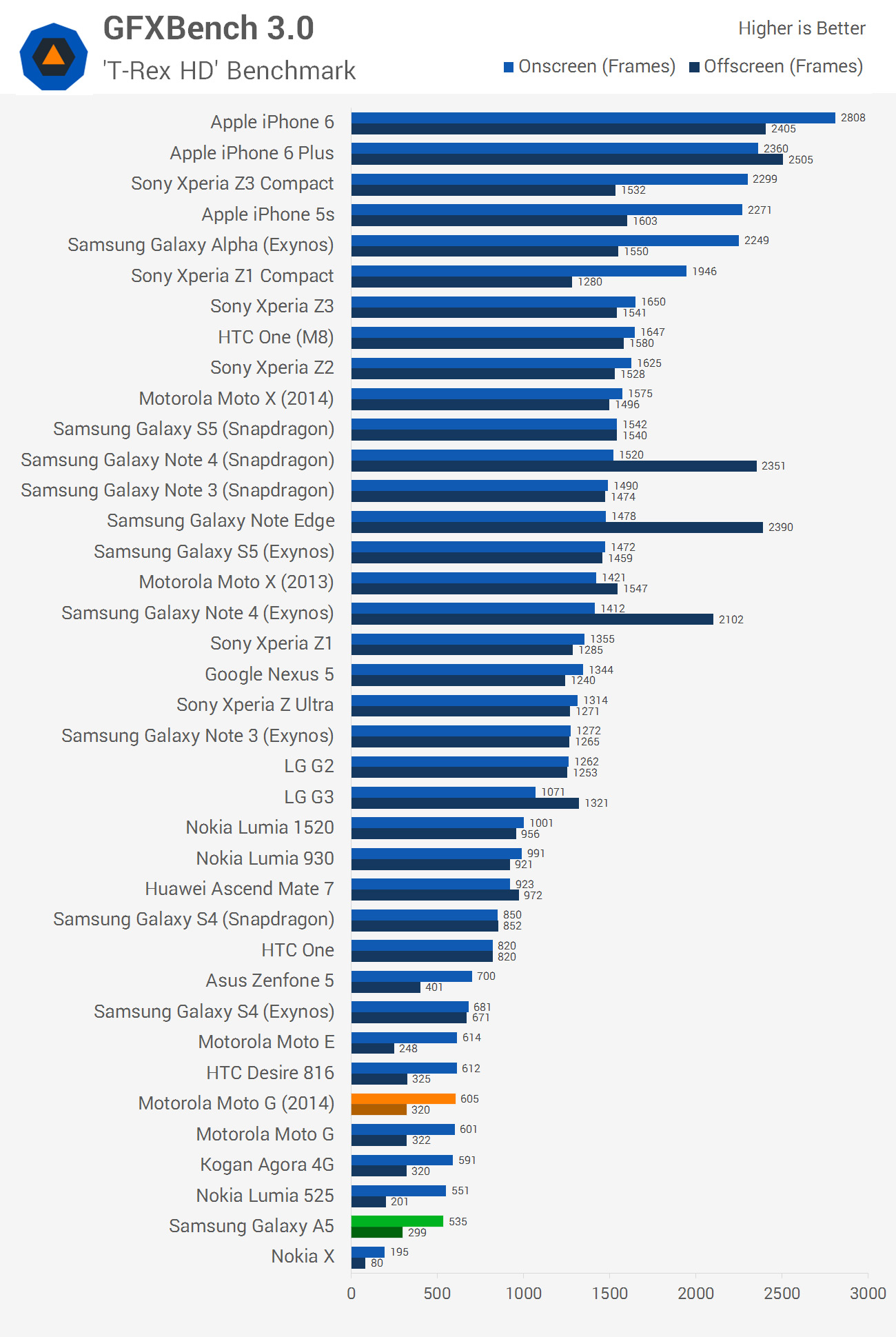
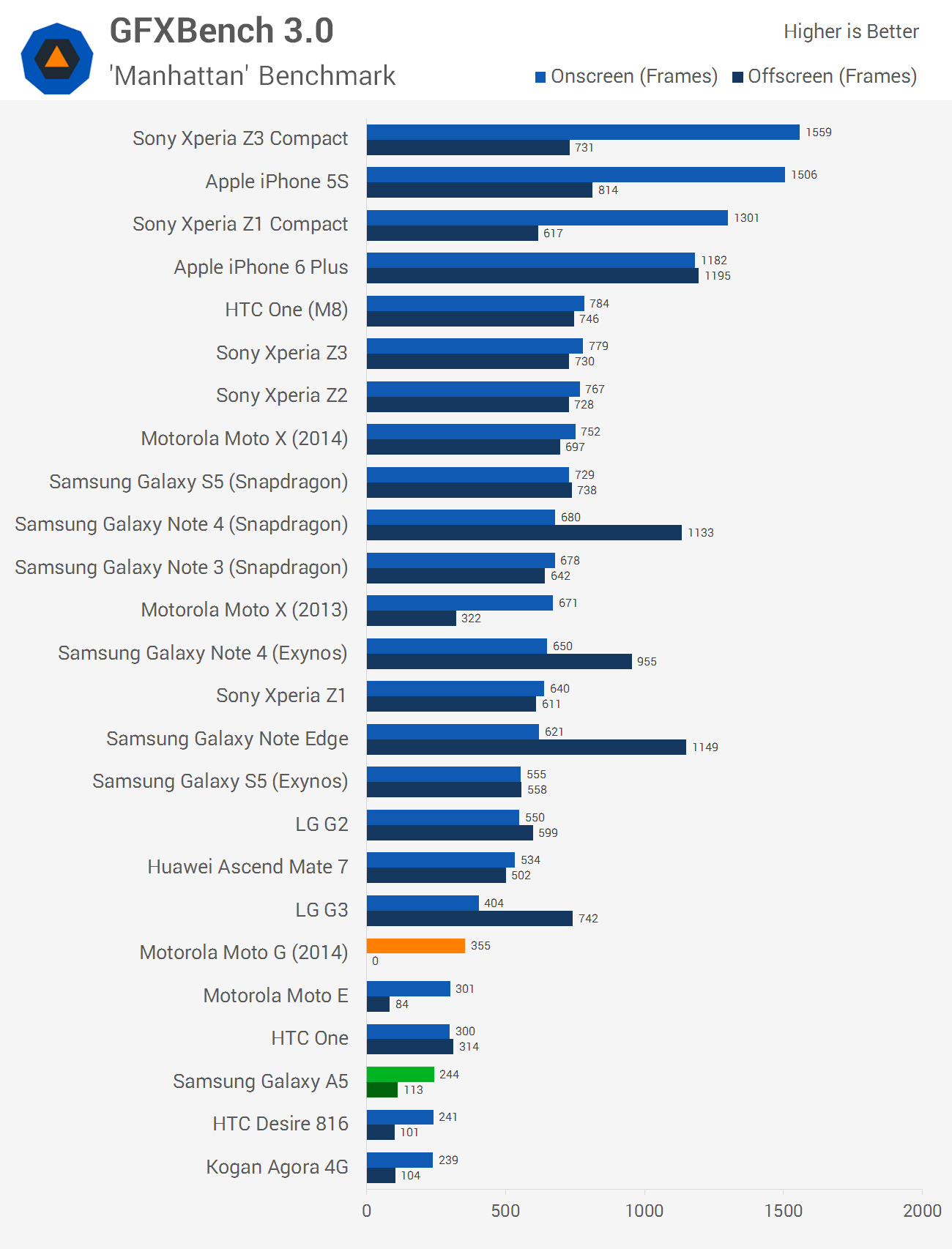
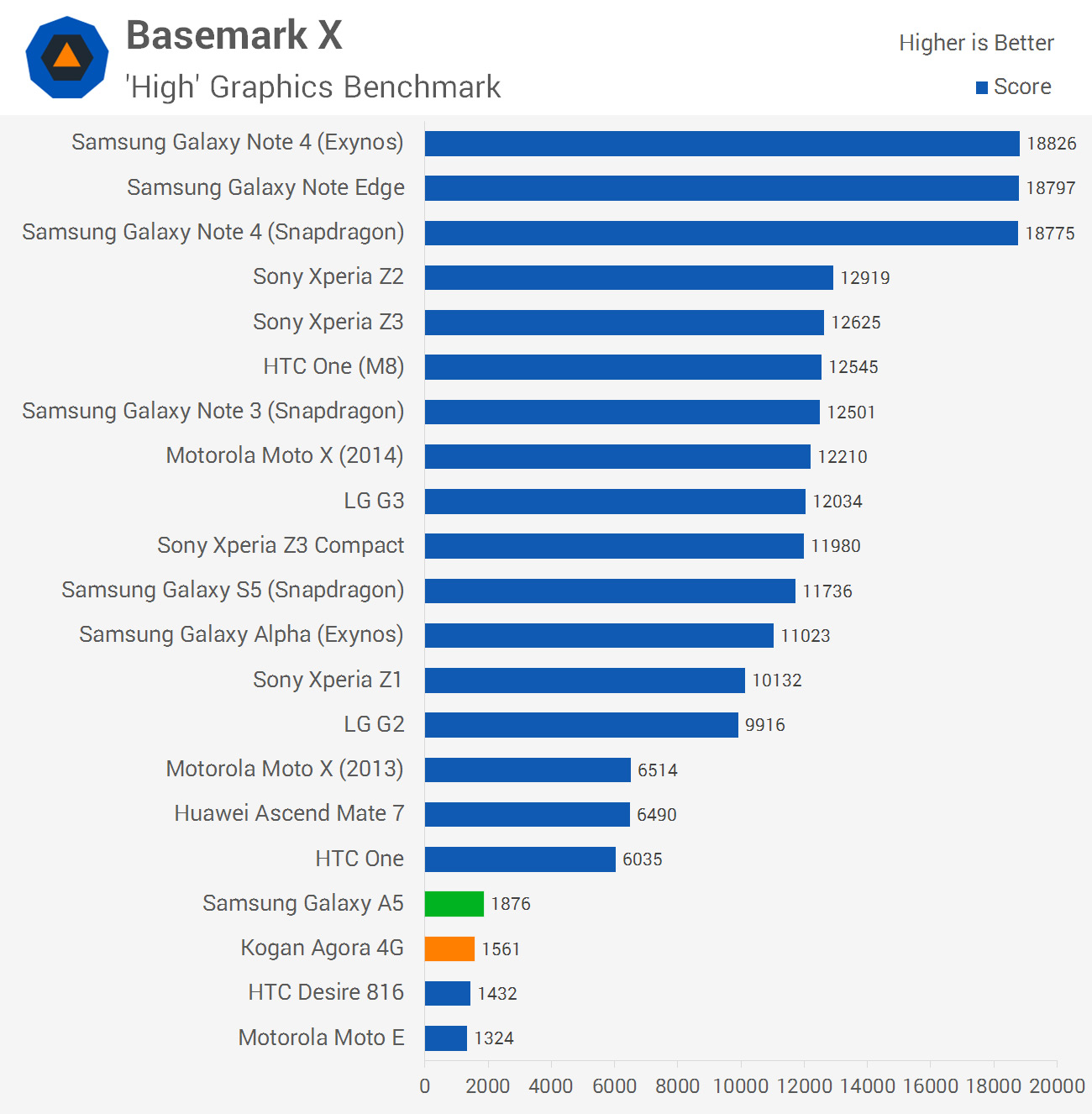
When it comes to GPU performance, the Adreno 306 was fairly disappointing. While Qualcomm has focused on improving CPU performance by roughly 20%, essentially no gains were made on the GPU front, keeping this SoC firmly in the realm of 720p displays.
On average, the Adreno 306 was just 1% faster than the Adreno 305, which is an insignificant difference. Interestingly, performance varied from around 10% faster to 10% slower depending on the benchmark, though I expect there will be no performance difference in games.
I suspect that part of the reason Qualcomm hasn't improved the graphics performance of the Snapdragon 410 is that the company wants to keep their higher end products for mid-range handsets with 1080p displays. These types of displays haven't yet reached the price points Qualcomm is targeting for Snapdragon 410-powered devices, and they would rather companies not choose their cheaper SoCs for higher-specced mid-range smartphones.
Instead, the Snadpragon 610 and 615 are targeted at these handsets. Both these SoCs feature a more powerful GPU designed for mid-range 1080p devices, as well as a higher-clocked Cortex-A53 CPU. I would have rather seen the Snapdragon 610 in the Galaxy A5 considering its price tag, though that's something I'll discuss in further detail later.
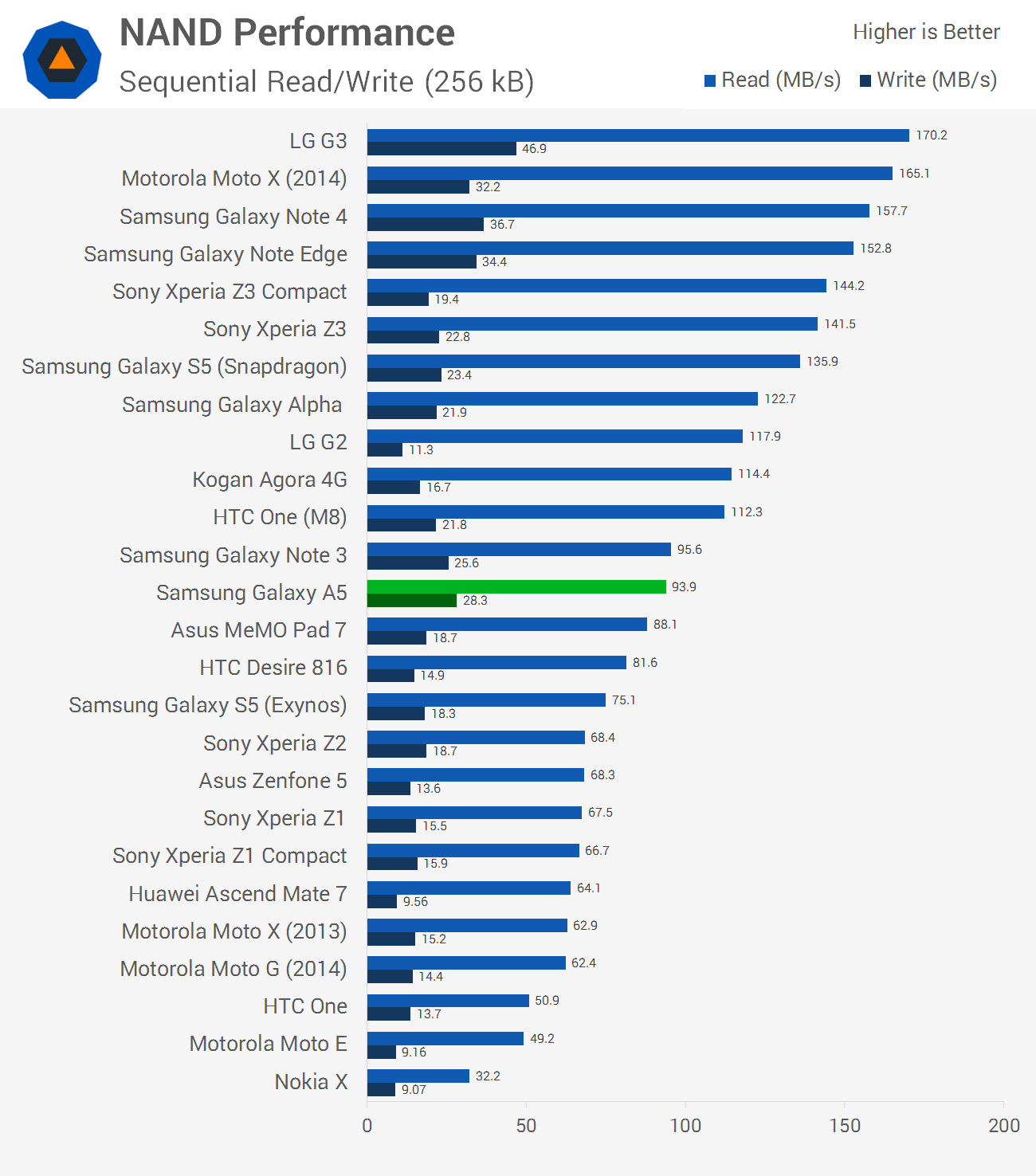
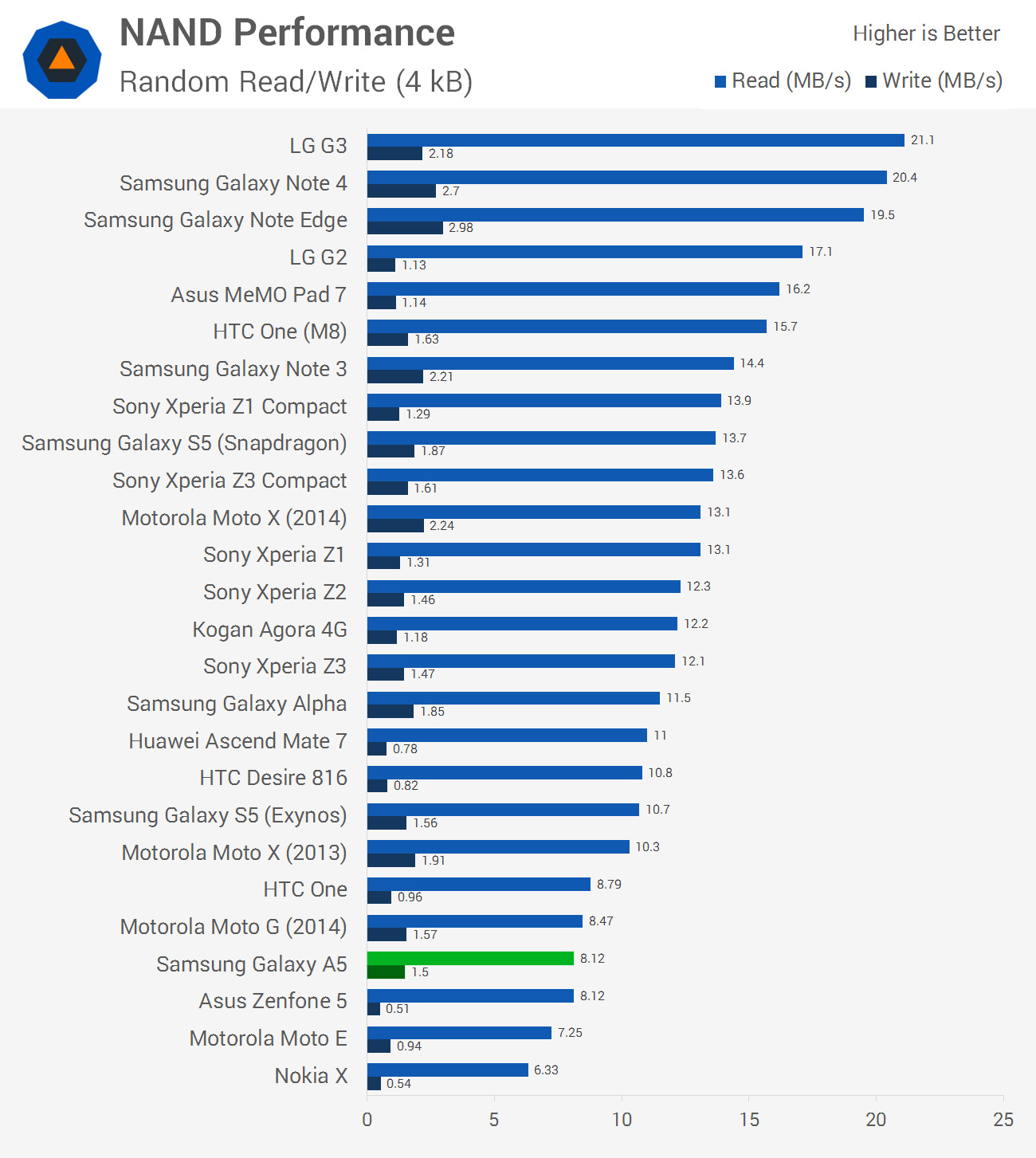
Sequential NAND performance is quite good from the Galaxy A5, though not as good as current flagships. In typical Samsung fashion, random NAND read and write speeds are lower than expected, with the A5 falling to the bottom of our charts.
